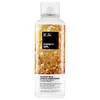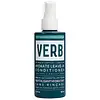What's inside
What's inside
 Key Ingredients
Key Ingredients

 Benefits
Benefits

 Concerns
Concerns

 Ingredients Side-by-side
Ingredients Side-by-side

Water
Skin ConditioningDimethyl Ether
SolventPentaerythrityl Tetraisostearate
EmollientDiphenylsiloxy Phenyl Trimethicone
Skin ConditioningC12-15 Alkyl Benzoate
AntimicrobialCetearyl Alcohol
EmollientIsostearyl Isostearate
EmollientPanthenol
Skin ConditioningCocos Nucifera Oil
MaskingOpuntia Ficus-Indica Fruit Extract
Skin ConditioningCocos Nucifera Fruit Extract
EmollientAstrocaryum Murumuru Seed Butter
EmollientAlanine
MaskingArginine
MaskingGlycine
BufferingHistidine
HumectantIsoleucine
Skin ConditioningPhenylalanine
MaskingProline
Skin ConditioningSerine
MaskingThreonine
Valine
MaskingHydrolyzed Pea Protein Pg-Propyl Silanetriol
Skin ConditioningCyclopentasiloxane
EmollientBis-PEG/PPG-20/5 PEG/PPG-20/5 Dimethicone
EmulsifyingMethoxy PEG/PPG-25/4 Dimethicone
EmulsifyingQuaternium-80
Quaternium-91
Caprylic/Capric Triglyceride
MaskingBehentrimonium Chloride
PreservativeMyristyl Myristate
EmollientHydrolyzed Hyaluronic Acid
HumectantGlycerin
HumectantSodium Hyaluronate
HumectantButylene Glycol
HumectantPEG-60 Hydrogenated Castor Oil
EmulsifyingPolyquaternium-59
UV AbsorberSodium PCA
HumectantSodium Lactate
BufferingAlcohol
AntimicrobialPropylene Glycol
HumectantLactic Acid
BufferingAspartic Acid
MaskingPhenoxyethanol
PreservativeParfum
MaskingAlpha-Isomethyl Ionone
PerfumingWater, Dimethyl Ether, Pentaerythrityl Tetraisostearate, Diphenylsiloxy Phenyl Trimethicone, C12-15 Alkyl Benzoate, Cetearyl Alcohol, Isostearyl Isostearate, Panthenol, Cocos Nucifera Oil, Opuntia Ficus-Indica Fruit Extract, Cocos Nucifera Fruit Extract, Astrocaryum Murumuru Seed Butter, Alanine, Arginine, Glycine, Histidine, Isoleucine, Phenylalanine, Proline, Serine, Threonine, Valine, Hydrolyzed Pea Protein Pg-Propyl Silanetriol, Cyclopentasiloxane, Bis-PEG/PPG-20/5 PEG/PPG-20/5 Dimethicone, Methoxy PEG/PPG-25/4 Dimethicone, Quaternium-80, Quaternium-91, Caprylic/Capric Triglyceride, Behentrimonium Chloride, Myristyl Myristate, Hydrolyzed Hyaluronic Acid, Glycerin, Sodium Hyaluronate, Butylene Glycol, PEG-60 Hydrogenated Castor Oil, Polyquaternium-59, Sodium PCA, Sodium Lactate, Alcohol, Propylene Glycol, Lactic Acid, Aspartic Acid, Phenoxyethanol, Parfum, Alpha-Isomethyl Ionone
Water
Skin ConditioningCetearyl Alcohol
EmollientCitrus Aurantium Dulcis Fruit Extract
MaskingCitrus Limon Fruit Extract
MaskingPyrus Malus Fruit Extract
Skin ConditioningSaccharum Officinarum Extract
MoisturisingBambusa Vulgaris Extract
Skin ConditioningCamellia Sinensis Leaf Extract
AntimicrobialArgania Spinosa Kernel Oil
EmollientOrbignya Oleifera Seed Oil
EmollientMoringa Oleifera Seed Oil
EmollientHydrolyzed Quinoa
Skin ConditioningCeramide Ng
Skin ConditioningAnhydroxylitol
HumectantHydrolyzed Vegetable Protein Pg-Propyl Silanetriol
Skin ConditioningGlycerin
HumectantEthylhexylglycerin
Skin ConditioningCitric Acid
BufferingSaccharide Isomerate
HumectantPolyglyceryl-10 Caprylate
EmulsifyingXylityl Sesquicaprylate
AntimicrobialSorbitan Oleate Decylglucoside Crosspolymer
CleansingPolyacrylate-1 Crosspolymer
Silicone Quaternium-16
Skin ConditioningPanthenol
Skin ConditioningParfum
MaskingQuaternium-91
Cetrimonium Methosulfate
AntimicrobialPhenyl Trimethicone
Skin ConditioningButyloctanol
HumectantAcetic Acid
BufferingUndeceth-5
EmulsifyingUndeceth-11
EmollientBenzalkonium Chloride
AntimicrobialSodium Chloride
MaskingSodium Citrate
BufferingDisodium EDTA
Methyl Palmitate
EmollientIodopropynyl Butylcarbamate
PreservativeBenzyl Alcohol
PerfumingPotassium Sorbate
PreservativePhenoxyethanol
PreservativeSodium Benzoate
MaskingBenzyl Salicylate
PerfumingWater, Cetearyl Alcohol, Citrus Aurantium Dulcis Fruit Extract, Citrus Limon Fruit Extract, Pyrus Malus Fruit Extract, Saccharum Officinarum Extract, Bambusa Vulgaris Extract, Camellia Sinensis Leaf Extract, Argania Spinosa Kernel Oil, Orbignya Oleifera Seed Oil, Moringa Oleifera Seed Oil, Hydrolyzed Quinoa, Ceramide Ng, Anhydroxylitol, Hydrolyzed Vegetable Protein Pg-Propyl Silanetriol, Glycerin, Ethylhexylglycerin, Citric Acid, Saccharide Isomerate, Polyglyceryl-10 Caprylate, Xylityl Sesquicaprylate, Sorbitan Oleate Decylglucoside Crosspolymer, Polyacrylate-1 Crosspolymer, Silicone Quaternium-16, Panthenol, Parfum, Quaternium-91, Cetrimonium Methosulfate, Phenyl Trimethicone, Butyloctanol, Acetic Acid, Undeceth-5, Undeceth-11, Benzalkonium Chloride, Sodium Chloride, Sodium Citrate, Disodium EDTA, Methyl Palmitate, Iodopropynyl Butylcarbamate, Benzyl Alcohol, Potassium Sorbate, Phenoxyethanol, Sodium Benzoate, Benzyl Salicylate
Ingredients Explained
These ingredients are found in both products.
Ingredients higher up in an ingredient list are typically present in a larger amount.
Cetearyl alcohol is a mixture of two fatty alcohols: cetyl alcohol and stearyl alcohol. It is mainly used as an emulsifier. Emulsifiers help prevent the separation of oils and products. Due to its composition, it can also be used to thicken a product or help create foam.
Cetearyl alcohol is an emollient. Emollients help soothe and hydrate the skin by trapping moisture.
Studies show Cetearyl alcohol is non-toxic and non-irritating. The FDA allows products labeled "alcohol-free" to have fatty alcohols.
This ingredient is usually derived from plant oils such as palm, vegetable, or coconut oils. There is debate on whether this ingredient will cause acne.
Due to the fatty acid base, this ingredient may not be Malassezia folliculitis safe.
Learn more about Cetearyl AlcoholGlycerin is already naturally found in your skin. It helps moisturize and protect your skin.
A study from 2016 found glycerin to be more effective as a humectant than AHAs and hyaluronic acid.
As a humectant, it helps the skin stay hydrated by pulling moisture to your skin. The low molecular weight of glycerin allows it to pull moisture into the deeper layers of your skin.
Hydrated skin improves your skin barrier; Your skin barrier helps protect against irritants and bacteria.
Glycerin has also been found to have antimicrobial and antiviral properties. Due to these properties, glycerin is often used in wound and burn treatments.
In cosmetics, glycerin is usually derived from plants such as soybean or palm. However, it can also be sourced from animals, such as tallow or animal fat.
This ingredient is organic, colorless, odorless, and non-toxic.
Glycerin is the name for this ingredient in American English. British English uses Glycerol/Glycerine.
Learn more about GlycerinPanthenol is a common ingredient that helps hydrate and soothe the skin. It is found naturally in our skin and hair.
There are two forms of panthenol: D and L.
D-panthenol is also known as dexpanthenol. Most cosmetics use dexpanthenol or a mixture of D and L-panthenol.
Panthenol is famous due to its ability to go deeper into the skin's layers. Using this ingredient has numerous pros (and no cons):
Like hyaluronic acid, panthenol is a humectant. Humectants are able to bind and hold large amounts of water to keep skin hydrated.
This ingredient works well for wound healing. It works by increasing tissue in the wound and helps close open wounds.
Once oxidized, panthenol converts to pantothenic acid. Panthothenic acid is found in all living cells.
This ingredient is also referred to as pro-vitamin B5.
Learn more about PanthenolParfum is a catch-all term for an ingredient or more that is used to give a scent to products.
Also called "fragrance", this ingredient can be a blend of hundreds of chemicals or plant oils. This means every product with "fragrance" or "parfum" in the ingredients list is a different mixture.
For instance, Habanolide is a proprietary trade name for a specific aroma chemical. When used as a fragrance ingredient in cosmetics, most aroma chemicals fall under the broad labeling category of “FRAGRANCE” or “PARFUM” according to EU and US regulations.
The term 'parfum' or 'fragrance' is not regulated in many countries. In many cases, it is up to the brand to define this term.
For instance, many brands choose to label themselves as "fragrance-free" because they are not using synthetic fragrances. However, their products may still contain ingredients such as essential oils that are considered a fragrance by INCI standards.
One example is Calendula flower extract. Calendula is an essential oil that still imparts a scent or 'fragrance'.
Depending on the blend, the ingredients in the mixture can cause allergies and sensitivities on the skin. Some ingredients that are known EU allergens include linalool and citronellol.
Parfum can also be used to mask or cover an unpleasant scent.
The bottom line is: not all fragrances/parfum/ingredients are created equally. If you are worried about fragrances, we recommend taking a closer look at an ingredient. And of course, we always recommend speaking with a professional.
Learn more about ParfumPhenoxyethanol is a preservative that has germicide, antimicrobial, and aromatic properties. Studies show that phenoxyethanol can prevent microbial growth. By itself, it has a scent that is similar to that of a rose.
It's often used in formulations along with Caprylyl Glycol to preserve the shelf life of products.
We don't have a description for Quaternium-91 yet.
Water. It's the most common cosmetic ingredient of all. You'll usually see it at the top of ingredient lists, meaning that it makes up the largest part of the product.
So why is it so popular? Water most often acts as a solvent - this means that it helps dissolve other ingredients into the formulation.
You'll also recognize water as that liquid we all need to stay alive. If you see this, drink a glass of water. Stay hydrated!
Learn more about Water